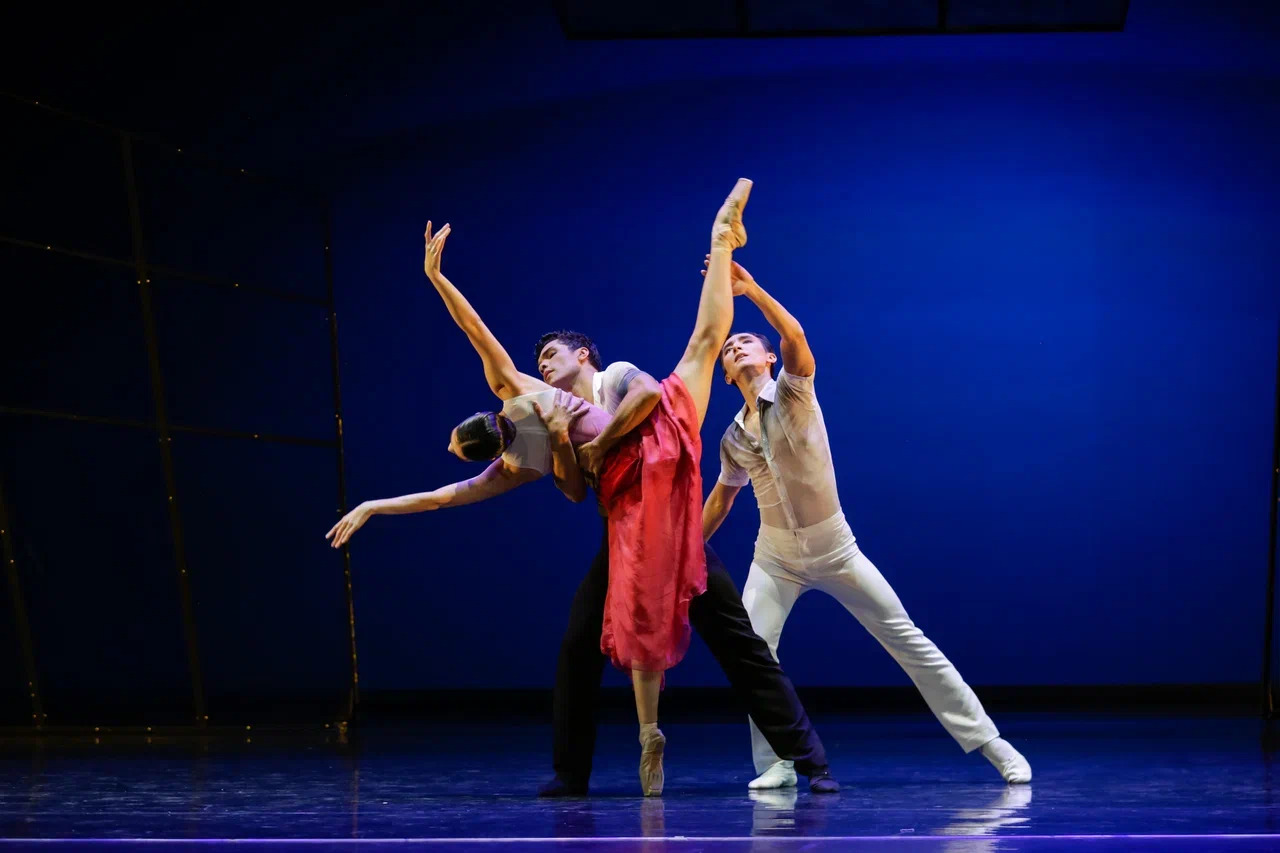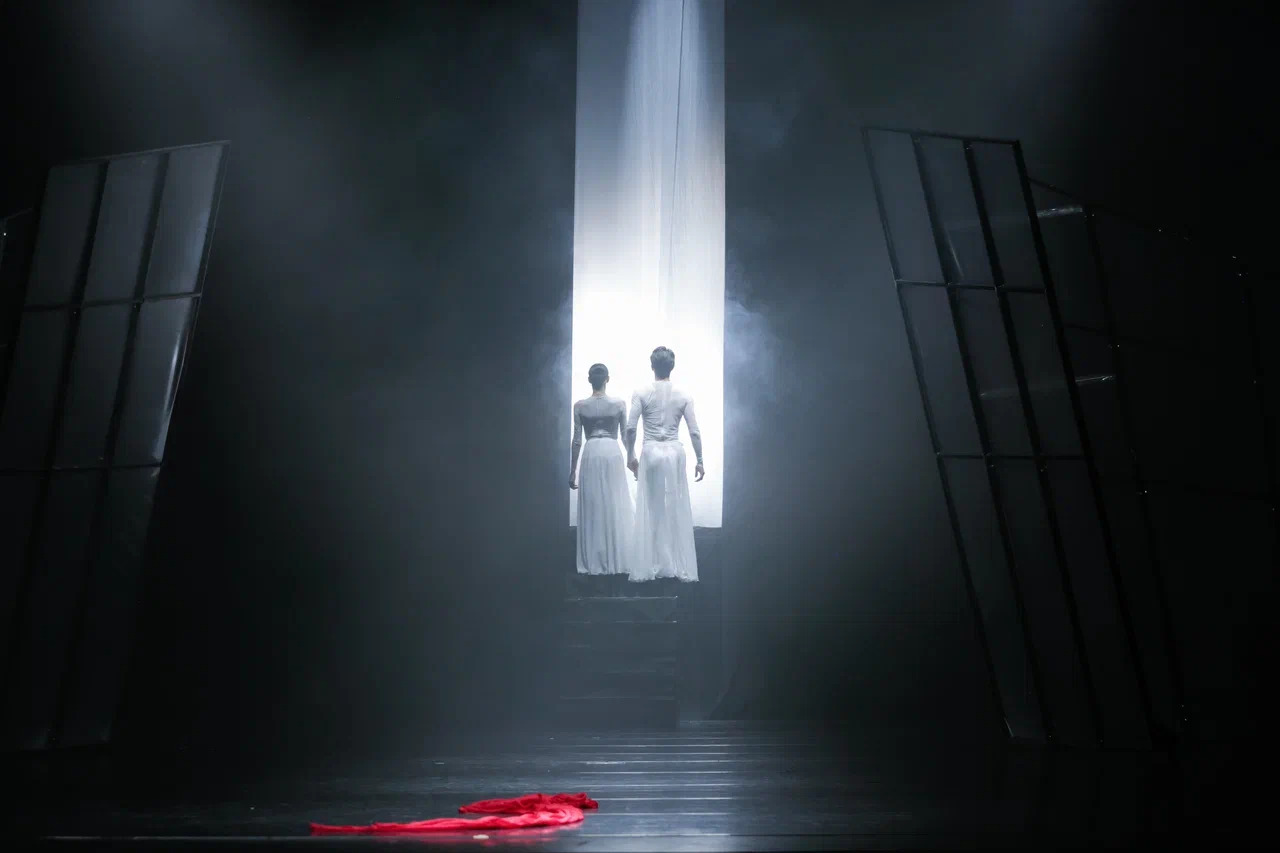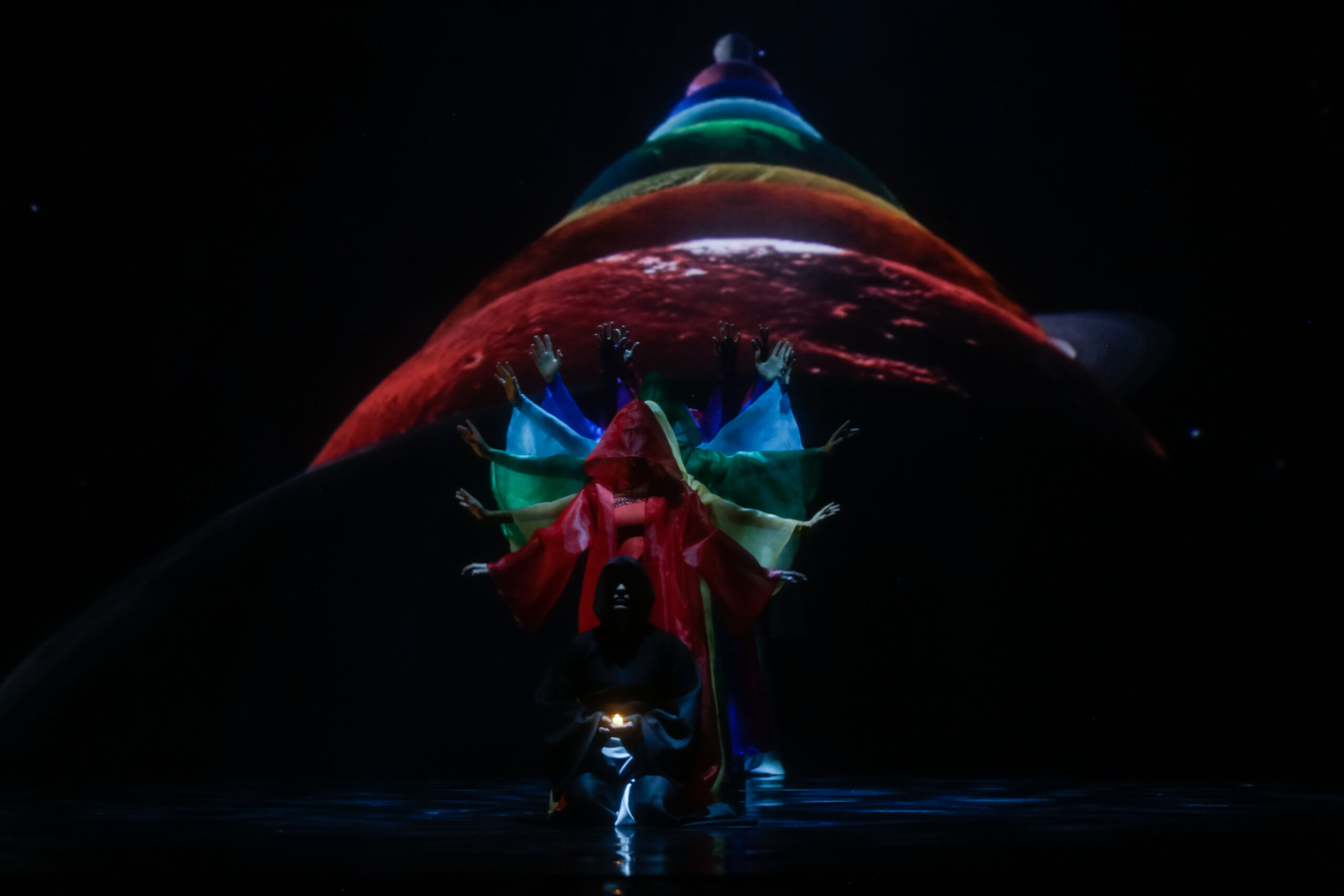ASTANA – Astana Ballet is premiering Ainur Abilgazina’s neoclassic “Soli Deo Gloria” and Olzhas Makhanbetaliyev’s modern “Nine” to highlight the theater’s 10th anniversary season on April 15-16 in the capital.

The ballet draws as much on modern dance moves as on unique lighting and video projections. Photo credit: Astana Ballet.
By bringing different dance styles together the artists have created new transformative ways to interpret the music and the narrative arc. Both choreographers are staging philosophical performances drawn from personal experiences of contemplating life and death.
Astana Ballet artistic director Nurlan Kanetov spoke of the theater’s mission to support young talents in their pursuit of self-expression through ballet production on stage.
Lead soloist Abilgazina has evolved as a choreographer from her debut classic divertissement “Triumph” to stage a neo-classical ballet.

First photo: “Soli Deo Gloria” explores the humankind’s path toward the eternal love of God. Photo credit: Astana Ballet.
The one-act “Soli Deo Gloria,” set to Gustav Mahler’s music, became a rich showcase for the author’s deep understanding of life and death and how one’s soul achieves peace.
The ballet, whose title translates as Glory to God Alone, presents an imaginative transitional world, where the material meets the spiritual. It is a powerful, surreal exploration of humankind’s path toward the eternal love of God.
“The meaning is that everything comes from Him and everything goes back there. The truth of our life is that it is given to us as a gift. People we meet are given to us as spiritual teachers who share their knowledge, and we gain certain experience with each of them, whether it is a partner, a friend, or a parent,” said Abilgazina.

The final scene is made climactic by the woman ascending to the afterlife to find peace with her eternal lover. Photo credit: Astana Ballet
The storyline revolves around a woman whose soul reaches a transition stage and seeks to free herself from worldly burdens through gratitude and forgiveness of partners she has met during her life.
The performance embodies the romantic, idealistic rush of the couple’s first love, followed by the reason-driven, selective trajectory of the second love and finally the mature and unconditional nature of the third love.
The final scene finds its climax by the woman ascending to the afterlife to find peace with her eternal lover.
The second play of the night is a debut ballet piece by Makhanbetaliyev called “Nine.” Set to the even and almost meditative beat of Lisa Gerrard, the ballet draws as much on modern dance’s grotesque moves as on unique lighting and video projections.

“Nine” is symbolic of the nine stages of life as well as nine planets. Photo credit: Astana Ballet.
According to Makhanbetaliyev, the abstract work is filled with symbolism of the number nine from the nine stages of life to the nine planets of the solar system representing different characters.
With aligned actions of nine lead dancers, the work introduces a blast of modernism into a conventional art form.
On a personal note, Makhanbetaliyev said he dedicated the ballet to his deceased friend, with whom he went through life and ballet together.
“I was at a loss for words saying goodbye to him, so I thought it would be best to say it through the dance, to tell it in a creative way. The story is my journey with him, the best moments of my life with him,” said Makhanbetaliyev.


